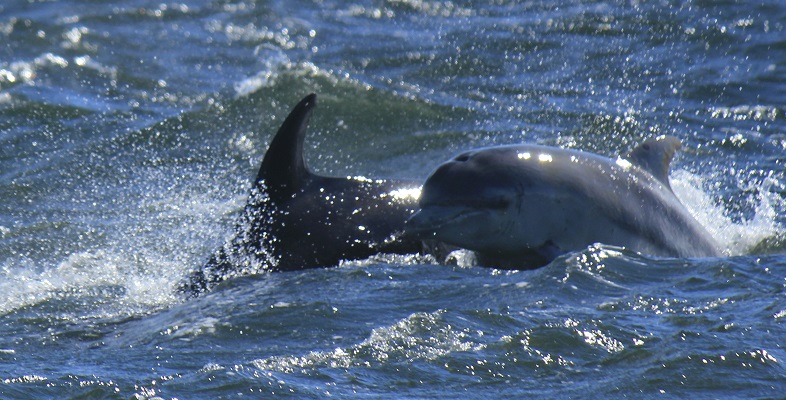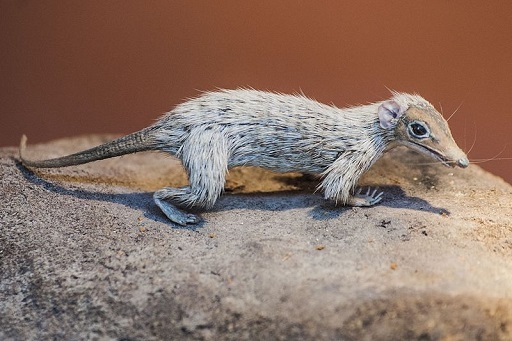1.2 The origins of aquatic mammals
Mammals are essentially a terrestrial group of animals: living mammals are descended from shrew-sized ancestors that evolved on land, and most mammals are still land-based animals.
A shrew-like fossil of an early mammal, named Megazostrodon, is 200 million years old. Rather than shuffling along, with splayed-out limbs in the manner of many reptiles, this animal had limbs that were more erect and aligned under the body. Fossil evidence shows that the skulls of very early mammals have a distinctive lower jaw structure and sites on the skull for the attachment of chewing muscles. We can be confident that between 225 and 195 million years ago, mammal-like reptiles evolved into true mammals, though for the next 100 million years or so these unobtrusive animals, none larger than a pet cat, co-existed with the dinosaurs.
For the first two-thirds of the evolutionary history of the mammals, from about 210 to 65 million years ago, dinosaurs dominated the plains and forests. But the dinosaurs conquered more than just the land: the seas and estuaries were home to other large aquatic reptiles, including ichthyosaurs and plesiosaurs. These animals disappeared at the same time as their terrestrial cousins – and their demise opened up new habitats and new sources of food that the mammals were quick to exploit.
Question 1
Using your general knowledge of mammals, try describing up to three biological features that mammals commonly possess.
Discussion
Mammals are distinguished by:
- the production of milk
- the possession of hair or similar structures, such as bristles
- they have the ability to regulate their body temperature, usually keeping it above the temperature of their surroundings, an ability that they share with birds. They are often described as being warm-blooded.

